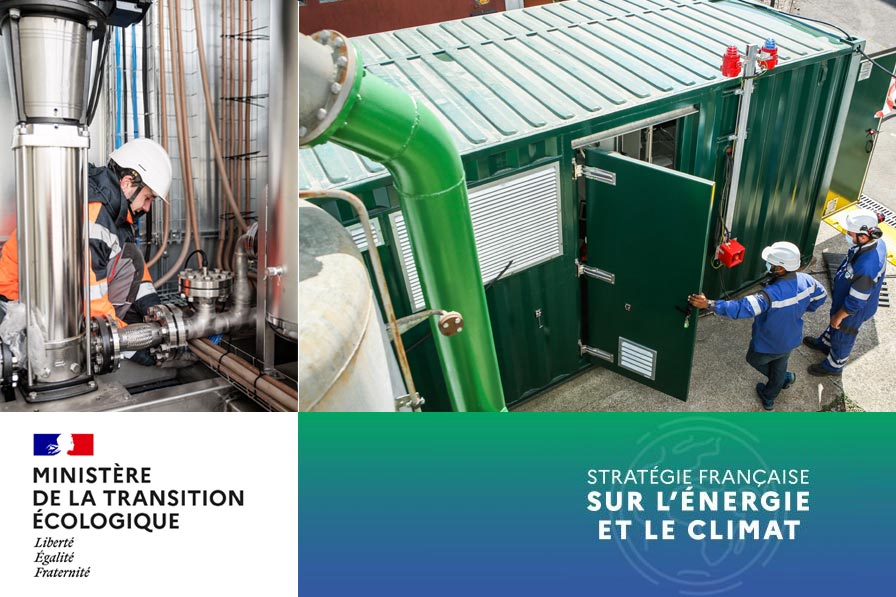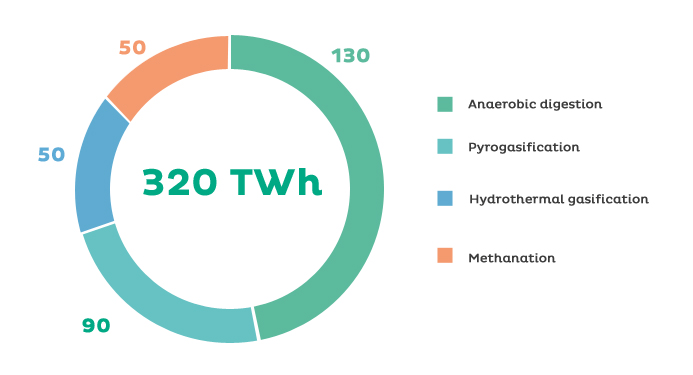French Energy and Climate Strategy

GRTgaz is responsible for compiling a multiannual forecast covering gas consumption and the production of renewable gases, the purpose of which is to clarify the changes needed for its infrastructures to accommodate these renewable gases. As part of this process, GRTgaz has published a contribution to the French Energy and Climate Strategy offering its vision and recommendations to make renewable gases drivers of the country’s energy transition.
France has committed to carbon neutrality by 2050, and to speeding up its decarbonisation process to reach the new European target for 2030 of a 55% reduction in greenhouse gas emissions. To do this, the country will need a balanced energy system that is resilient, safe, efficient, economical and affordable. All energy sources will have to play a part, including gas, the carbon content of which will be lowered thanks to renewable gases and hydrogen.
In November 2021, to further the development of its upcoming French Energy and Climate Strategy, the Ministry of the Ecological Transition launched a voluntary public consultation phase. This recently completed consultation had two goals: to inform people about key challenges; and to collect opinions from the public, institutional stakeholders and companies on the future direction of France’s energy and climate policies.
As part of this consultation, GRTgaz published a Stakeholders’ Manual setting out its position on the gas infrastructure and renewable gases – a decarbonised, local energy source that is vital to speed up the energy transition. These efforts are fully in line with the company’s core purpose: “Together, we make possible an energy future that is safe, affordable and climate neutral.”
GRTgaz’s recommendations for a balanced energy system based on renewable gases and hydrogen
GRTgaz presents its vision and recommendations to make renewable gases drivers of the energy transition:
- Recognise the significant potential for producing renewable and low-carbon gas that our regions – and in particular out rural regions – possess, which will reach 320 TWh (excluding hydrogen) by 2050. All energy needs at this date will hence be met via the sustainable use of French biomass, while prioritising food uses and materials and other means of energy recovery;
- Step up the development of renewable gases, as of now, to reach 60 TWh by 2030. Supplemented by hydrogen, these will account for 20% of gas consumption by this date, increasing France’s energy independence, in particular by replacing Russian gas imports. This will also contribute to reaching the heightened climate targets for 2030;
- Develop renewable gases by strengthening anaerobic digestion, the most mature renewable gas production technology, to reach 130 TWh by 2050 while promoting the development of technologies that are currently less mature, such as pyrogasification, which recovers dry inputs (anticipated production of 90 TWh in 2050), hydrothermal gasification, which targets poorly recovered wet biomass (50 TWh by 2050), and methanation, which converts hydrogen into methane (50 TWh by 2050);
- Use renewable gases to provide a vital, rapidly implementable solution for sectors that are difficult to decarbonise. These include heavy mobility, for which bioNGV is a mature, immediately available, long-term sustainable solution; gas-based industrial processes subject to the increasing demands of the European gas quota system; power plants, which play a key role in balancing the electrical system; and the housing sector, which relies on efficient solutions including very high energy performance gas boilers and heat pumps, in particular hybrid models.
Estimated methane production in 2050 (in TWh, excluding hydrogen)
Methane production estimate 2050 (in TWh excluding hydrogen)

Alongside renewable gas, there is a strong need to develop hydrogen production, in particular to support industry and heavy mobility. Implementing a hydrogen infrastructure that links production and consumption within and between these industrial basins is a key aspect to providing safe, competitive access to hydrogen. GRTgaz is hence calling for hydrogen infrastructure planning, and more broadly energy infrastructure planning, which forges close links between electricity, gas and hydrogen network operators.
Finally, the Stakeholders’ Manual is a reminder of the strategic role that GRTgaz’s transmission network and the gas infrastructures play in France’s present and future energy systems. As it states in conclusion: “The existing gas infrastructure is powerful, essential to the security of energy supply, and will be able to accommodate renewable, low-carbon gas and hydrogen in a cost-effective way. It will be indispensable to the energy transition.”